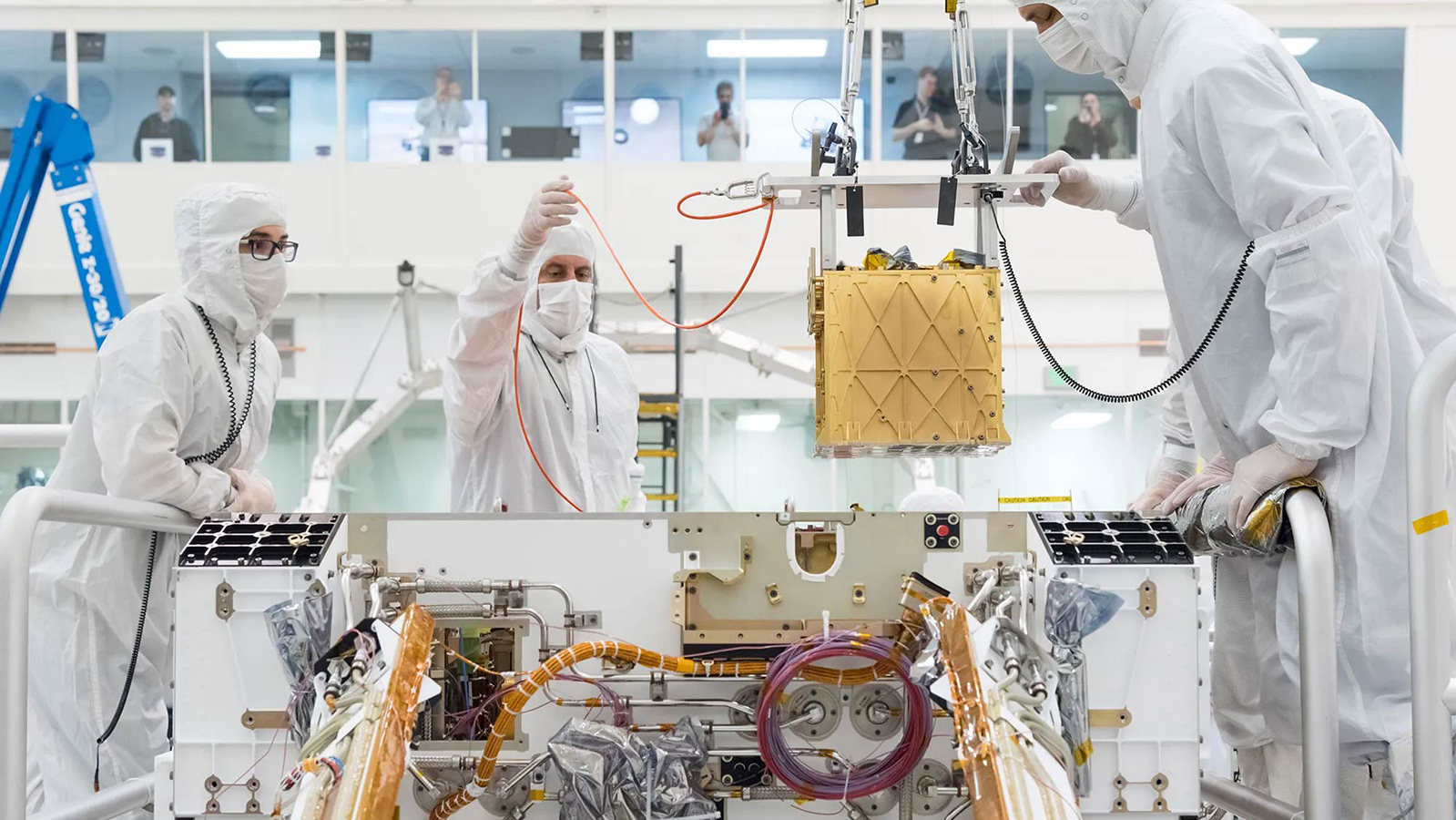Stay Up to Date
Submit your email address to receive the latest industry and Aerospace America news.
The Life Sciences and Systems Technical Committee advances technologies required to keep people healthy and safe as they explore space.
NASA’s Mars Oxygen In-Situ Resource Utilization Experiment, MOXIE, concluded operations in September after one full Martian year. Operating aboard the Perseverance rover, MOXIE doubled its nominal production rate of oxygen converted from the Martian atmosphere. The new record was achieved in June, when the instrument generated 12 grams of molecular oxygen per hour during its 15th operational run. For comparison, one astronaut nominally consumes about 36 grams per hour. Over the course of the experiment, led by MIT, a combined 122 grams of oxygen was produced over 16 operational tests using the 100-Watt power budget from the Perseverance rover. MOXIE used solid oxygen electrolysis at 800 degrees Celsius to produce gaseous oxygen, a useful substance for propellant as well as life support, with byproducts including carbon monoxide and carbon residue. The Utah-based OxEon Energy team that provided the Solid Oxide Electrolysis, SOXE, cell for MOXIE is developing larger versions with increased duty cycles to study the viability of this technology for human Mars missions. The team tested SOXE prototypes scaled for exploration missions for thousands of operational hours, with results published in July showing peak oxygen generation of 28 kilograms per day in lunar conditions and 13 kg per day in a Martian atmosphere simulator at NASA’s Jet Propulsion Laboratory in California.
In June, Varda Space Industries of California announced its small pharmaceutical satellite had produced crystals of ritonavir, an HIV drug. The spacecraft, W-Series 1, was lofted to orbit on a SpaceX rideshare launch and is designed for controlled reentry and subsequent payload retrieval. Multiple space agencies and major pharmaceutical companies have flown hundreds of similar experiments on the space shuttles and International Space Station, but Varda’s approach leverages automation and availability of reusable launch vehicles to reduce the cost of such research. Protein crystal growth in microgravity results in larger, more uniform crystals that are easier to study and may have medical advantages compared to terrestrial crystals.
Boston-based Axonis Therapeutics’s Neuronix system, launched aboard a Northrop Grumman Cygnus cargo spacecraft in July, uses three-dimensional formation of neuron cells to study neurodegenerative disease and the effectiveness of a gene therapy. ISS astronauts activated Neuronix in August. The neurons, grown from human stem cells, exhibited a 3D structure in microgravity, which is more anatomically correct than standard terrestrial cell cultures. The 3D structure helps researchers study the human stem cells and their response to a neuron-targeting gene therapy. Investigators aim to develop new treatments for paralysis and for neurological diseases like Alzheimer’s, Parkinson’s and Huntington’s.
NASA’s Johnson Space Center in Texas concluded its Investigating Structure and Function of the Eye, or ISAFE, experiment, aboard ISS in September. Vision and ocular health data was collected from astronauts after varying mission durations, up to one year in orbit. The study concerns whether spaceflight duration affects the onset and severity of spaceflight-associated neurocular syndrome, SANS, and whether vision returns to normal after returning to Earth gravity. Space medicine research has shown in recent years that the fluid shifts in microgravity, along with other factors yet to be determined, leads to degraded vision in most astronauts who spend at least a month in space. NASA’s Human Research Program is studying SANS to develop mitigations and to better understand exploration risks.
Stay Up to Date
Submit your email address to receive the latest industry and Aerospace America news.




